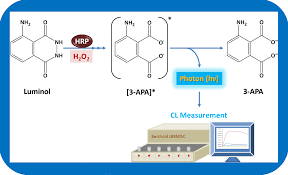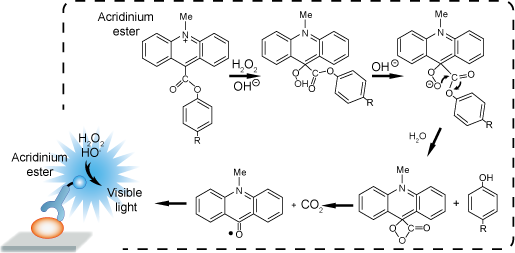Chemiluminescence is the conversion of chemical energy into the emission of visible light (luminescence) as the result of an oxidation or hydrolysis reaction. This technology provides a very sensitive, cost-effective detection alternative to many radioisotopic and fluorescence techniques, and most chromogenic detection processes. Now, it is widely used in the diagnosis of cancer, infectious diseases, endocrine function, and hormones etc.
After more than 40 years development, Chemiluminescence has been the iteration of four generations of reagents.
The first generation of reagents is isoluminol as a luminescent marker using CLIA method. The representative company is Italian DiaSorin.
The second generation of reagents is using HRP catalyzed luminol marker through CIEIA detection. Johnson & Johnson is the representative enterprise. Luminol has high luminescence yield and good water solubility. And it can react with many oxidant. So it is widely used in chemiluminescence immunoassay.

The third generation of reagents is acridinium ester as a luminescent marker using CLIA method. Representative companies are Abbott, Siemens and Beckman. Chemiluminescence efficiency of acridinium ester is 5 times or above than of luminol. In addition, Chemiluminescence reaction is rapid. Acridinium ester can give off the light only in the presence of NaOH and H2O2. In the oxidation reaction process, the decomposition of conjugate compound has no effect on free Acridinium ester luminescence. It also has good stability and is easy to store.

The fourth generation of reagents is used in electrochemiluminescence immunoassay (ECLIA). Roche is a representative company.
Edited by Suzhou Yacoo Science Co., Ltd.
Copyright © Suzhou Yacoo Science Co., Ltd. All Rights Reserved
Friendly Links :
online service